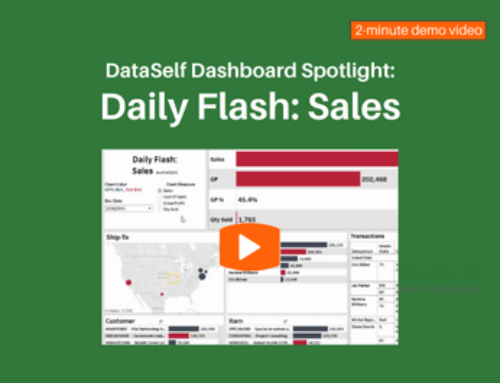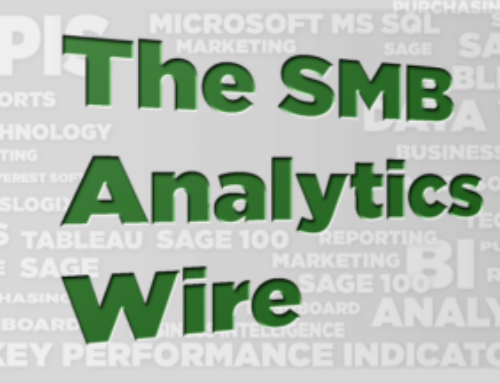 Not so long ago, individual sales people’s style and “feel” for the prospect provided the intelligence on the progress of a sale. Then, the sale either closed or it didn’t.
Not so long ago, individual sales people’s style and “feel” for the prospect provided the intelligence on the progress of a sale. Then, the sale either closed or it didn’t.
With advances in technology, quantifiable sales data has become central to many organizations and now heavily influences sales processes. Today’s sales managers are data-savvy, and they realize that there is more to data analysis than watching revenue go up or down month after month. It is critical to their role that they influence the metrics before the metrics influence them. And that means using data to drive sales reps’ performance.
Data Changed The Sales Manager’s Role
According to James Jordan’s book Cracking the Sales Management Code, out of 306 sales metrics, managers can only control only about 50. Those metrics include activities such as calls placed and proposals made. “Gone are the days,” writes Jordan, “when sales management was simply about preparing and motivating your reps. Today’s sales managers are also expected to be, in part, a marketer, part CFO, part IT director, part trainer, and probably parts of a half dozen other roles.” This is particularly evident when managers must offer guidance based on data. One especially effective technique, Jordan writes, is having weekly one-on-one meetings. There, the data-savvy manager must apply experience and data to examine the pipeline with their team member and spot promising opportunities. Such guidance appeals to sales reps’ primary motivators: competition, numbers, and curiosity.
Data Visualization and Speedy Accessibility
Visualizing data is a clear and natural way to communicate both high-level and drilled down views of metrics. An excellent data management tool can help maintain an open dialog between leaders and reps by providing graphical reports. In a one-on-one huddle, you may start out looking at a graphical report on company-wide sales, then move into how the individual rep compares. In a meeting, questions may arise that might not be answered by prepared reports. Having a speedy data management tool can facilitate on-the-spot deeper dives into relevant questions. Slow tools get in the way. Competitive sales reps want to ask questions and get answers in a snap.
Data Driven Motivation
Sales people like to win. They see themselves as though they are in a race with their peers. While speeding towards the period close, they glance sideways and ask themselves: Who’s ahead? Who’s behind? How do I beat that person just ahead?
When presenting relevant data to reps, key metrics should pop out and be instantly apparent to them. Use color coding such as green, red, and gray highlighting. Reps who see their numbers in red are typically determined to identify what actions they should take to improve.
Sales people also like knowledge. Having the right data helps them be a hero to your clients. Instead of blindly calling customers and prospects, hoping for a good response on the other end, today’s sales reps prepare for calls armed with relevant buying history, industry trends, and options pertinent to the client’s goals, which could influence the next purchase.
Data can also provide background and research that can help educate and support customers’ changing needs. Customers appreciate the attentiveness and reward it by giving repeat business.
Flexible and Accessible Reporting
Well-designed dashboards in a good data management tool will put answers up front exactly how users want to see them. As questions and preferences evolve, dashboards need to be able to evolve with them without delay.
Last year’s “hot” program may not show data the way reps want to see it this year. Last year, reps may have wanted to see a count of all their contacts, website hits, emails, and calls on their dashboard. Now, they may want to see client tweets. Reps may also have realized that being able to see customers on a time zone map will help them know before they pick up the phone if their client is still at work, or if they are potentially on their second glass of wine.
Your data tool should be easy to customize so that dashboards and reports show exactly what sales team members want to see. Another necessity is data on the go. Your team shouldn’t have to wait for a return to the office. Reps need to see relevant data while they are on the road, in a customer’s office, or while catching a flight to visit a client.
There’s no way around it: nothing feels better in sales than winning. Having the right tools lets your data offer your team a competitive edge.





